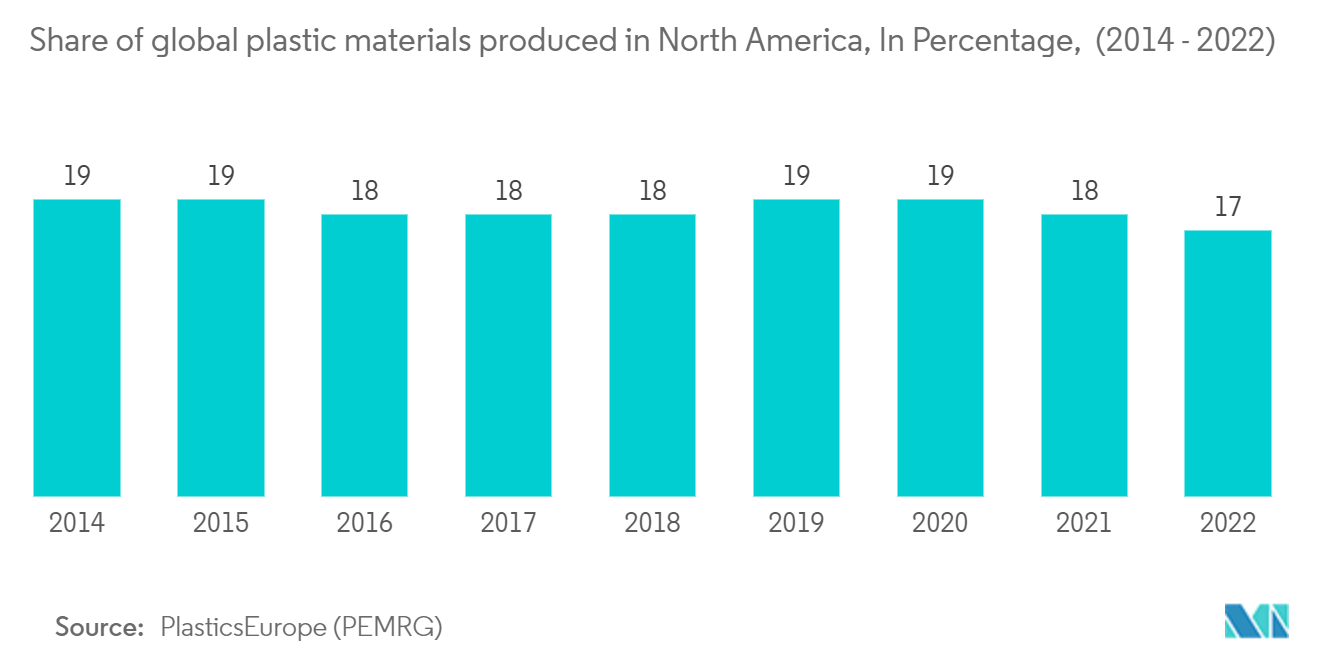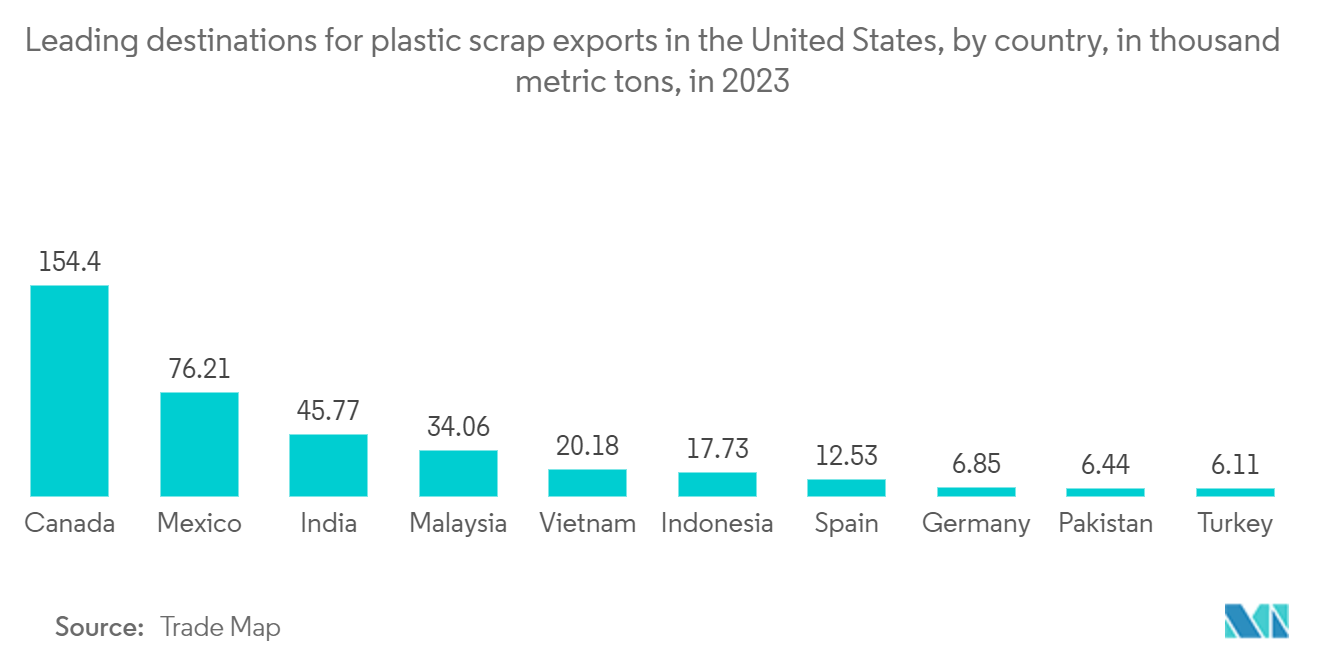Market Trends of North America Plastic Waste Management Industry
Plastics Industry's Roadmap Paves the Way for Circular Economies in Durable Goods
The plastics industry's roadmap underscores significant opportunities to reshape the end-of-life phase for durable goods. Given that nearly 60% of domestically produced North American plastics are channeled into durable goods, it is imperative to find solutions that preserve these materials, pivoting toward a circular economy where plastics are recycled into new products rather than discarded.
The American Chemistry Council's (ACC) Plastics Division has unveiled an industry roadmap to guide policymakers, business leaders, and the public toward more sustainable practices. This roadmap outlines policies and strategies to expedite the adoption of circular practices within five key sectors: automotive, building and construction, electronics, infrastructure, and medical.
Some of the key points highlighted in the roadmap include the necessity of designing products and their components for easy disassembly, repair, and recycling, emphasizing the transformation of spent components into new products.
The pivotal role of advanced (chemical) recycling broadens the scope of recyclable plastics, especially those used in durable applications that traditional mechanical recycling struggles with. The significance of establishing standards, methods, and certification programs to ensure durable products align with a circular economy for plastics.
There is a call for more pilot programs, akin to ACC's collaboration with Oak Ridge National Laboratory to assess the technical and economic feasibility of separating, sorting, and recycling durable plastics. ACC is committed to collaborating with policymakers and the durable plastics value chain to realize the circularity goals outlined in the industry roadmap.
As guided by the American Chemistry Council, the plastics industry is pivoting toward a circular economy, especially in the automotive, construction, and electronics sectors. This shift, highlighted in the industry's roadmap, focuses on advanced recycling, designing for disassembly, and setting stringent standards. It is a concerted effort involving policymakers, industry giants, and the ACC to revolutionize how durable plastics are managed. The goal is to ensure a continuous cycle of recycling and repurposing, significantly curbing waste.

United States Leads High-income Nations in Plastic Consumption
High-income countries, including the United States, exhibit a trend of higher per capita plastic consumption compared to their less affluent counterparts. The United States stands out, with the average American using approximately 0.34 kilograms of plastic daily. This figure is nearly triple the usage of Canada and Mexico, each at 0.09 kg/person per day. With an annual consumption of 37.83 million tons, the United States ranks as the world's second-largest plastic consumer, trailing significantly behind China's staggering 60-million-ton consumption. However, being a top consumer does not automatically equate to being a polluter. Wealthier nations, while consuming more plastic per person, also possess the financial resources for more effective disposal methods.
The United States and other affluent nations predominantly dispose of their plastic waste in well-managed landfills or opt for recycling, even with minimal financial returns. Conversely, many lower-income countries with lower plastic consumption rates grapple with unregulated landfills or lack waste management systems, leading to heightened risks of plastic waste entering the oceans.
In 2024, the National Oceanic and Atmospheric Administration (NOAA) allocated nearly USD 70 million for transformative, multi-year initiatives aimed at removing significant marine debris and deploying proven technologies to intercept debris along the US coasts, Great Lakes, territories, and Freely Associated States. Furthermore, NOAA earmarked USD 27 million for 29 Sea Grant projects, focusing on coalition-building and innovative research to combat marine debris over the long term.
Highlighting the disparity in plastic consumption, the United States emerges as the world's second-largest consumer, showcasing a stark contrast between affluent and less affluent nations in waste management capabilities. While the United States demonstrates a commitment to advanced waste management and marine debris removal, initiatives like NOAA's substantial funding of USD 70 million for marine debris projects underscore a dedicated approach to combatting plastic pollution and safeguarding marine ecosystems. These endeavors play a pivotal role in bridging the global gap between consumption and sustainable waste management practices.


